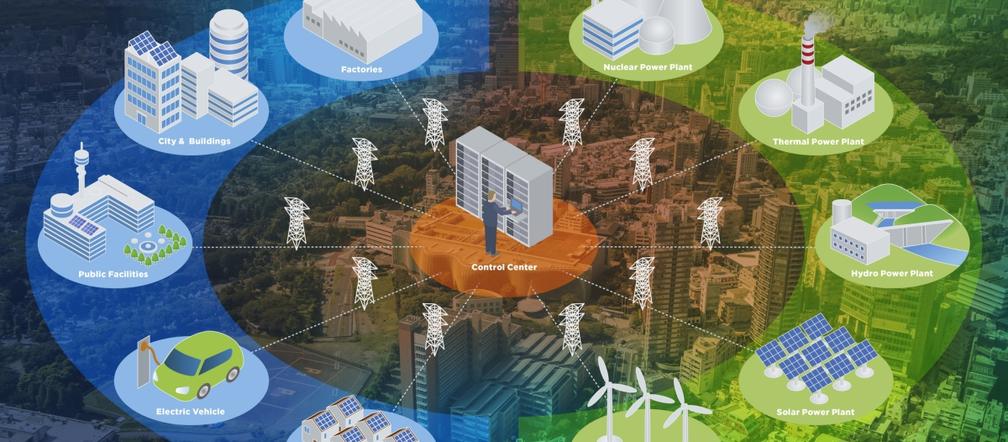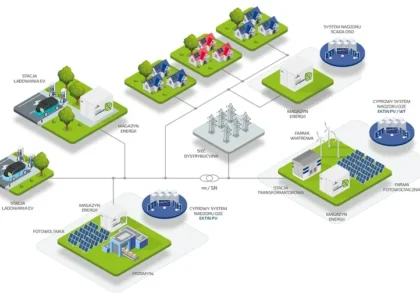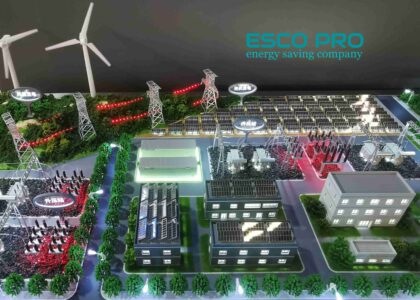Energy Arbitrage and Optimization of Electricity Purchase Costs
Steps to Build a Modern Energy Strategy for Distribution Network Operators
Distribution network operators are key players in ensuring the stability and efficiency of electricity supply. To build a modern energy strategy, the following steps should be taken:
Analysis of the Current State of the Network
The first step is to thoroughly analyze the current state of the distribution network. It is necessary to assess its efficiency, the degree of modernization and identify potential improvement points.
Implementation of Smart Technologies
Investments in smart technologies such as network management systems (DMS), smart meters and IoT devices are crucial to improve efficiency and monitor energy consumption in real time.
Integration of Renewable Energy Sources
Green energy is not only the future, but also a current requirement. Integrating renewable energy sources into the distribution network requires the use of appropriate energy storage and management technologies.
Investment and modernization planning
Long-term investment planning that takes into account future trends and technologies is crucial to ensuring continuity and reliability of supply.
Energy strategy for industrial electricity consumers
Industrial electricity consumers also need to adapt their energy strategies to reduce costs and increase efficiency. Here are the key steps:
Energy audit
Conducting an energy audit allows you to identify the main sources of energy consumption and potential savings.
Optimization of production processes
Use of energy management technologies
Advanced energy management systems (EMS) allow you to monitor and optimize energy consumption in real time.
Energy supply contracts
Negotiating favorable energy supply contracts with suppliers can result in significant savings and cost stability.
Energy arbitrage
Energy arbitrage involves buying energy during periods of low demand and low prices and selling or using it during periods of high demand. To effectively conduct energy arbitrage, you need to:
Monitor energy prices
Constant monitoring of energy prices on the market allows you to identify the most advantageous purchase moments. Energy storage
Investment in energy storage technologies, such as lithium-ion batteries or hydrogen-based technologies, is key to effective arbitrage.
Data analysis and forecasting
The use of advanced analytical tools and forecasting of energy demand help make the best decisions on the purchase and sale of energy.
Optimizing the cost of purchasing electricity
Optimizing the cost of purchasing energy is a key element of the strategy for both network operators and industrial customers. Here are some key aspects:
Negotiating contracts with suppliers
Regularly renegotiating contracts with electricity suppliers and searching for new, competitive offers can lead to significant savings.
Using dynamic tariffs
Choosing dynamic tariffs that change depending on demand and market prices allows for the optimization of energy purchase costs.
Implementing efficient technologies
Investing in technologies that improve energy efficiency, such as energy management systems, smart meters and process automation, can significantly reduce energy consumption costs.
Planning and forecasting
Long-term planning and forecasting of energy demand allows for better management of purchases, avoiding high prices during periods of peak demand.
In summary, building a modern energy strategy requires an integrated approach that includes advanced technologies, renewable energy sources and effective cost management. Both distribution network operators and industrial energy consumers can benefit from these strategies to ensure stability, efficiency and sustainable development.







